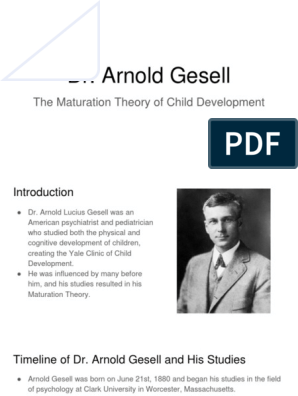0% found this document useful (0 votes)
5K views8 pagesPiaget's Sensory Motor Stage
The document summarizes Jean Piaget's theory of cognitive development, which describes 4 stages of development from birth through adulthood. [1] The first stage is the sensory-motor stage from birth to age 2 where infants learn through senses and motor skills without symbolic thought. [2] During this stage infants develop object permanence and understanding of causality. [3] Piaget's theory revolutionized understanding of child development and how children's minds work at different ages.
Uploaded by
933484Copyright
© Attribution Non-Commercial (BY-NC)
We take content rights seriously. If you suspect this is your content, claim it here.
Available Formats
Download as DOC, PDF, TXT or read online on Scribd
0% found this document useful (0 votes)
5K views8 pagesPiaget's Sensory Motor Stage
The document summarizes Jean Piaget's theory of cognitive development, which describes 4 stages of development from birth through adulthood. [1] The first stage is the sensory-motor stage from birth to age 2 where infants learn through senses and motor skills without symbolic thought. [2] During this stage infants develop object permanence and understanding of causality. [3] Piaget's theory revolutionized understanding of child development and how children's minds work at different ages.
Uploaded by
933484Copyright
© Attribution Non-Commercial (BY-NC)
We take content rights seriously. If you suspect this is your content, claim it here.
Available Formats
Download as DOC, PDF, TXT or read online on Scribd
/ 8

























































































